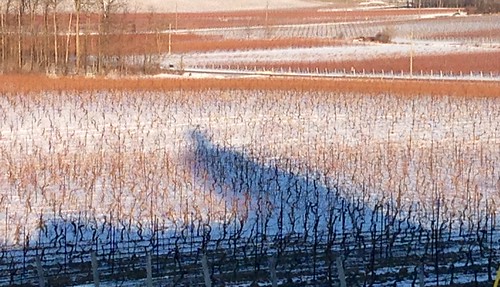
The numbers from early January’s deep freeze in Ontario are trickling in and for those in the grape and wine industry it’s not good news.
Crop damage in Niagara vineyards is widespread, ranging from a grape crop survival rate of 30% for Merlot, the hardest hit variety in the region, in the Lincoln Lakeshore sub appellation to 39% for Chardonnay on the Beamsville Bench to 31% for Cabernet Franc on Vinemount Ridge.
It appears the Beamsville Bench suffered some of the worst losses, with Cabernet Franc hit with a 55% survival rate and Riesling 54%. Vinemount Ridge, in a similar climatic zone as the Beamsville Bench, also suffered big losses, especially for Chardonnay, Cab Franc and Riesling.
St. David’s Bench (Niagara-on-the-Lake) appears to be the least affected by the temperatures that plunged to -20 and colder on Jan. 6-8 in some areas during the so-called “polar vortex” episode across North America. Chardonnay, Pinot Noir, Sauvignon Blanc and Cabernet Franc in St. David’s were barely affected but both Merlot and Syrah have a 55% and 40% survival rate respectively.
Merlot was the most susceptible to the cold snap with Chardonnay, Syrah and Cabernet Franc not far behind.
Here are some of the numbers by sub appellation as recorded by Brock’s VineAlert program as of Jan. 15 (all numbers are survival rate percentages):
Creek Shores: Riesling 67%, Chard 56%, Cab Franc 83%, Merlot 51%, Pinot Noir 67%
Beamsville Bench: Cab Franc 55%, Chard 39%, Riesling 54%
Four-Mile Creek: Chard 80%, Cab Franc 75%, Merlot 53%, Sauv Blanc 55%
Lincoln Lakeshore: Chard 67%, Cab Franc 56%, Merlot 30%, Pinot Noir 77%
Niagara River: Syrah 55%, Sauv Blanc 56%, Riesling 79%
Short Hills Bench: Riesling 60%, Chard 80%, Cab Franc 81%, Merlot 41%, Sauv Blanc 48%, Riesling 60%
St. Davids: Chard 93%, Cab Franc 81%, Merlot 55%, Pinot Noir 93%, Syrah 40%, Sauv Blanc 77%
Twenty Mile Bench: Sauv Blanc 52%, Chard 62%, Cab Franc 60%, Pinot Noir 80%
Vinemount Ridge: Chard 42%, Cab Franc 31%, Riesling 40%
While the numbers look catastrophic, Vineland Estates winemaker Brian Schmidt (that’s his photo at the top) cautions that those numbers don’t necessarily translate to loss of crop when all is said and done.
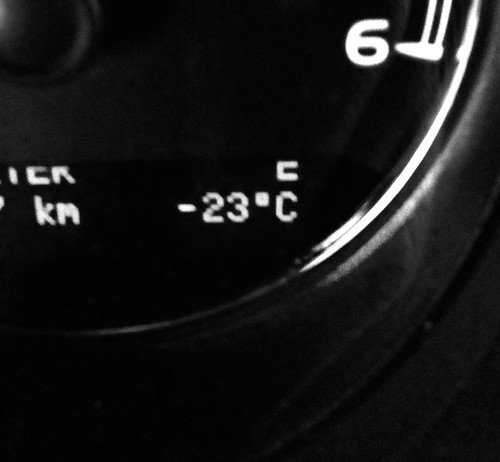
“No one will escape damage,” he says. “It’s bad, but not devastating.”
And nowhere near as horrific as the devastation caused during the short crops of 2005 and 2003. In 2005, many wineries had no grapes at all to make wine and the short crop (90% of vineyards were lost) prompted a one-time allowance for some Niagara wineries, the so-called Cellared In Canada wineries, to use a minimum of 1% Ontario juice in their foreign blends so that VQA grapes could be directed to VQA wines. A measure that shone a bright, but negative, light on that particular segment of the wine industry in Ontario.
Schmidt says a 40% survival rate could translate to an 80% survival rate with proper pruning and modified vineyard practices this spring.
But, he also warned, another cold spell is looming next week and is expected to last through the end of the month that could cause further damage.
What happens when cold infiltrates a bud and causes crop losses? There is a good explanation here from Cornell University.
One of the other concerns, says Schmidt, is not just a loss of crop volume in 2014 but also in the following vintage as the vines can’t recover from a short crop fast enough.
While Niagara’s crop problems are bad, the worst hit region in Ontario was Lake Erie North Shore.
The Windsor Star reported that the polar vortex could end up costing Essex County’s wine industry more than $37 million.
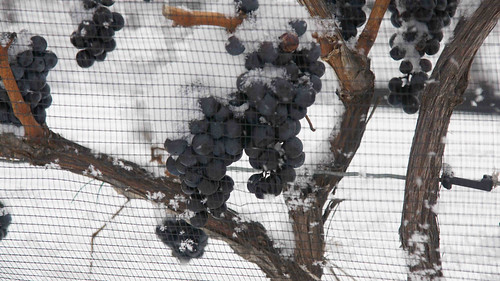
Temperatures there dropped to -25C the night of Jan. 6 and lingered for eight or nine hours into the following morning, which likely froze more than half the grape buds, Tom O’Brien, president of the Essex Pelee Island Coast (EPIC) Winegrowers Association, said last week, according to the Star.
“The bud kill will be significant,” O’Brien said.
Ontario’s other major wine region, Prince Edward County, had no data as of today (Jan. 17) but would be less affected simply because the wineries there generally bury their vines in the fall to protect against the cold.
Not all the news this winter is bad for Ontario wineries.
The Grape Growers of Ontario raised a glass this week to toast the record grape harvest of 2013 and celebrate this winter’s icewine harvest.
“Ontario’s grape harvest set records this past autumn. It’s another superb harvest and it’s promising in terms of the quality of the grapes,” said Grape Growers of Ontario Chair Bill George.
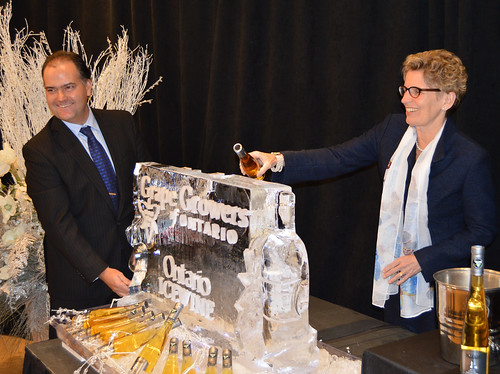
George made the announcement in Toronto with Ontario Premier Kathleen Wynne.
The 2013 harvest is a record-breaking 79,756 tonnes of grapes, valued at $99.7 million.
“Ontario’s grape growers know that great wine starts with quality grapes,” said George. “Growers are proud to grow the grapes that go into Ontario and VQA wines.”
As well, over 6,000 tonnes of grapes were netted in the autumn and left to be harvested for Ontario’s icewine production.
This winter’s icy weather has provided several nights of ideal temperatures for the icewine harvest.
“I want to congratulate Ontario’s grape growers on a record harvest for 2013,” said Wynne. “I’m committed to supporting this innovative industry and I encourage consumers to choose Ontario wines throughout the year. Strengthening the grape and wine industry is part of the Ontario government’s economic plan to create jobs and support a dynamic and innovative business climate.”
Over 14,000 Ontario jobs are tied to the continued success of 100% Ontario-grown wines and the 17,000 acres of vineyards that are now in place across the province.
A large crop is good news for Niagara wineries, which will likely have reduced portfolios in 2014.
Schmidt, for one, will be beefing up his 2013 wine portfolio in anticipation of lower volumes in 2014 but will resist the temptation to blend in juice from 2103 into the 2014 vintage.
According to VQA Ontario’s Laurie Macdonald, “the content must be at least 85% of the stated vintage, so they could use up to 15% of other vintages. Vintage dating is optional for sparkling and tortified wines so they could be any proportion.”
Macdonald hasn’t seen definitive info on crop losses yet but says “if there was to be a widespread shortage of Ontario grapes, there are not too many options except for a significant drop in VQA production.” She added her fingers are crossed for now and hopefully the bumper crop from 2013 can bridge some of the gap if needed.
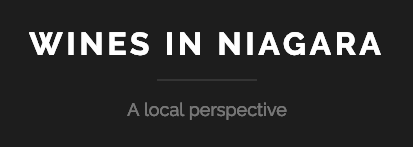






Comment here